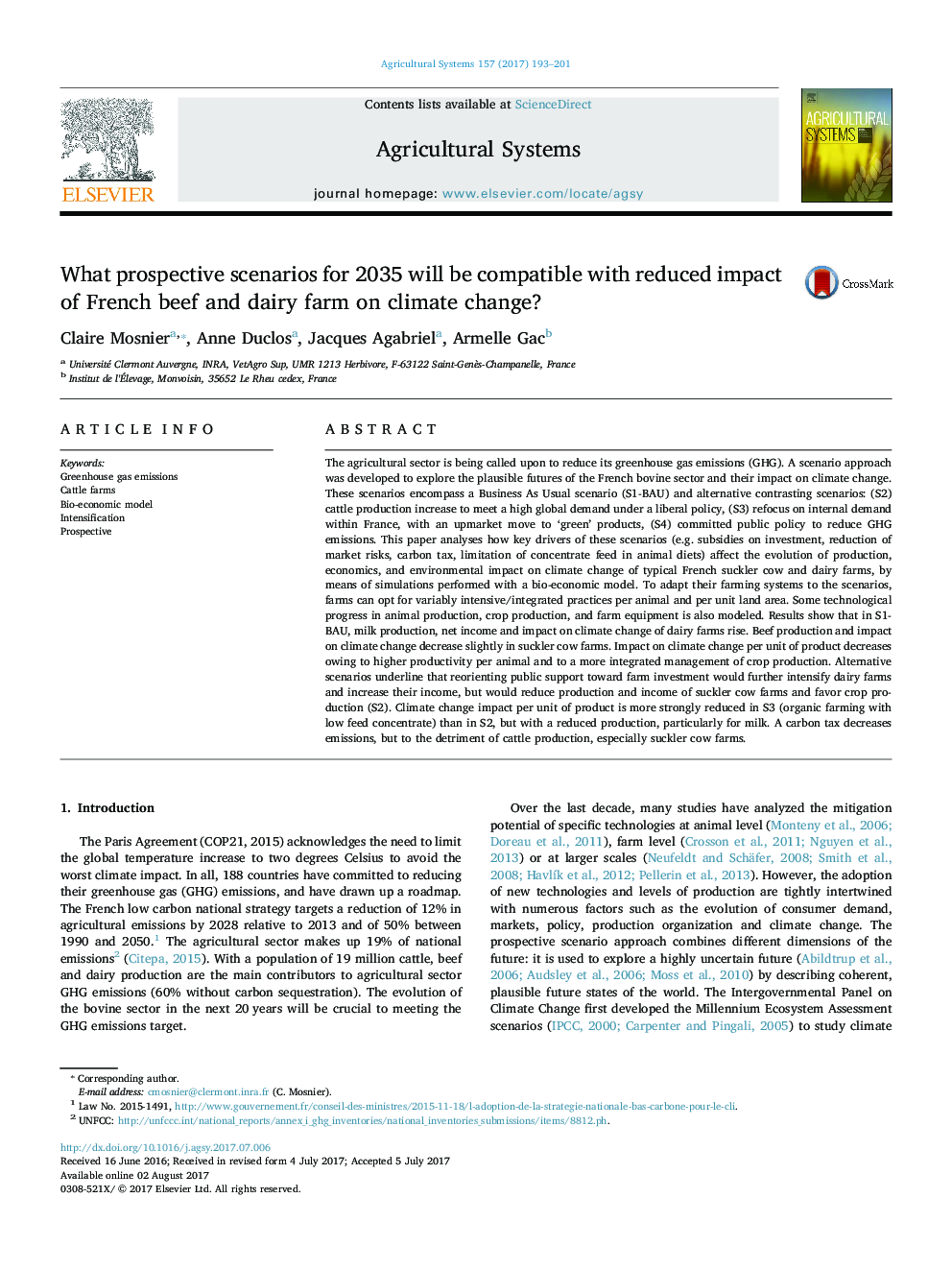| کد مقاله | کد نشریه | سال انتشار | مقاله انگلیسی | نسخه تمام متن |
|---|---|---|---|---|
| 5759633 | 1623213 | 2017 | 9 صفحه PDF | دانلود رایگان |
عنوان انگلیسی مقاله ISI
What prospective scenarios for 2035 will be compatible with reduced impact of French beef and dairy farm on climate change?
ترجمه فارسی عنوان
چه سناریوهای آیندهنویسی برای سال 2035 با کاهش تاثیرات مزرعه گوشت گاو و فرنی فرانسوی بر تغییرات آب و هوایی سازگار خواهد بود؟
دانلود مقاله + سفارش ترجمه
دانلود مقاله ISI انگلیسی
رایگان برای ایرانیان
کلمات کلیدی
انتشار گازهای گلخانه ای، مزارع گاو، مدل اقتصادی بیولوژیکی، تشدید شدن، چشم انداز،
موضوعات مرتبط
علوم زیستی و بیوفناوری
علوم کشاورزی و بیولوژیک
علوم کشاورزی و بیولوژیک (عمومی)
چکیده انگلیسی
The agricultural sector is being called upon to reduce its greenhouse gas emissions (GHG). A scenario approach was developed to explore the plausible futures of the French bovine sector and their impact on climate change. These scenarios encompass a Business As Usual scenario (S1-BAU) and alternative contrasting scenarios: (S2) cattle production increase to meet a high global demand under a liberal policy, (S3) refocus on internal demand within France, with an upmarket move to 'green' products, (S4) committed public policy to reduce GHG emissions. This paper analyses how key drivers of these scenarios (e.g. subsidies on investment, reduction of market risks, carbon tax, limitation of concentrate feed in animal diets) affect the evolution of production, economics, and environmental impact on climate change of typical French suckler cow and dairy farms, by means of simulations performed with a bio-economic model. To adapt their farming systems to the scenarios, farms can opt for variably intensive/integrated practices per animal and per unit land area. Some technological progress in animal production, crop production, and farm equipment is also modeled. Results show that in S1-BAU, milk production, net income and impact on climate change of dairy farms rise. Beef production and impact on climate change decrease slightly in suckler cow farms. Impact on climate change per unit of product decreases owing to higher productivity per animal and to a more integrated management of crop production. Alternative scenarios underline that reorienting public support toward farm investment would further intensify dairy farms and increase their income, but would reduce production and income of suckler cow farms and favor crop production (S2). Climate change impact per unit of product is more strongly reduced in S3 (organic farming with low feed concentrate) than in S2, but with a reduced production, particularly for milk. A carbon tax decreases emissions, but to the detriment of cattle production, especially suckler cow farms.
ناشر
Database: Elsevier - ScienceDirect (ساینس دایرکت)
Journal: Agricultural Systems - Volume 157, October 2017, Pages 193-201
Journal: Agricultural Systems - Volume 157, October 2017, Pages 193-201
نویسندگان
Claire Mosnier, Anne Duclos, Jacques Agabriel, Armelle Gac,
